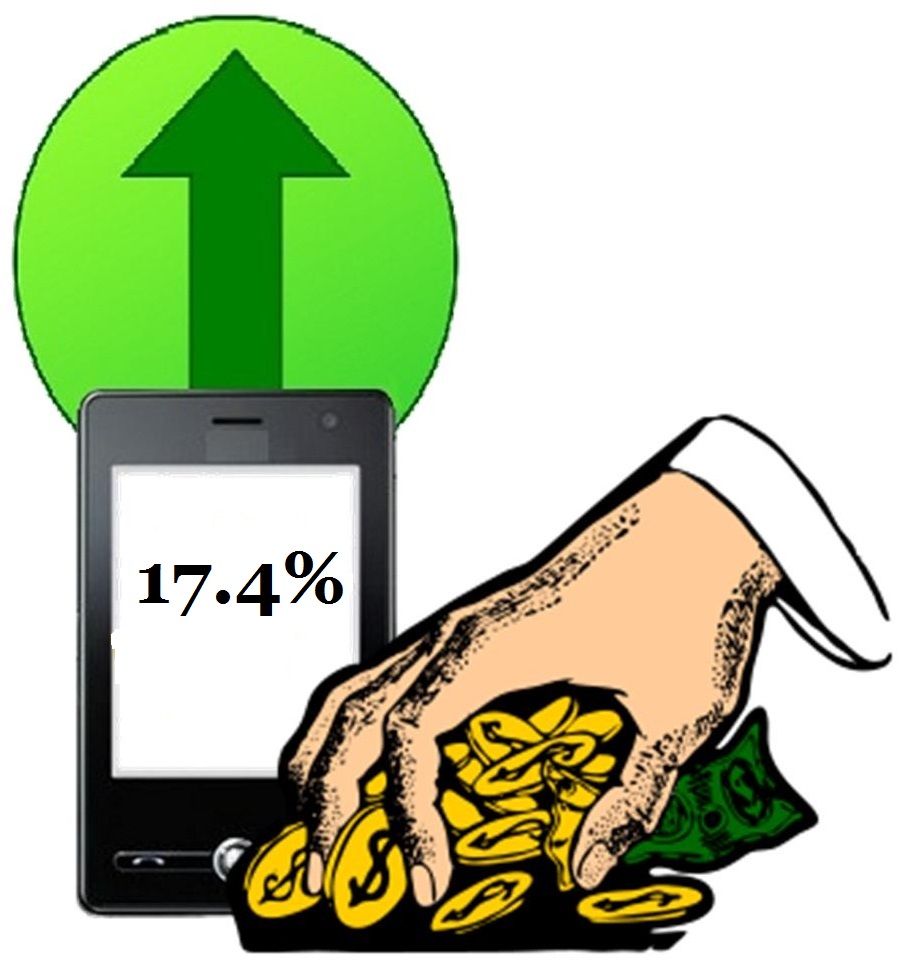The contribution of personalization has made a considerable difference in the channel’s popularity.
According to a whitepaper that was recently released by Medio, this year, mobile commerce is contributing 17.4 percent to the total online shopping revenues, and that is only expected to rise.
The report went on to predict that the channel will represent 25 percent of online revenues by 2017.
Medio pointed out that retailers are finding mobile commerce to be appealing in a number of ways, and these are helping to make it more effective so that they can generate more revenues by way of smartphone and tablet shoppers. It stated that the channel gives companies the chance to collect a considerable amount of useful data from consumers. Though the majority have yet to figure out how to use this information to its greatest potential, there remains a significant amount of value that can be pulled from big data.
The mobile commerce whitepaper showed that real-time tools and predictive analytics assist in personalization.
 It showed that the information gleaned through mobile commerce can, in turn, be applied to personalizing the experience offered by the retailer to encourage the consumer to shop for the first time, and to return once more when similar products are needed.
It showed that the information gleaned through mobile commerce can, in turn, be applied to personalizing the experience offered by the retailer to encourage the consumer to shop for the first time, and to return once more when similar products are needed.
In terms of personalization and its importance, the whitepaper stated that “A search for a product might begin on a smartphone, while order fulfillment is finalized on a PC or tablet. Being able to identify the same user across devices is necessary to create a personalized relationship; the foundation of sophisticated and intelligent user segmentation starts with being able to deduce when two users are in fact the same person.”
Mobile commerce does not typically allow for the use of cookies. Therefore, to compensate for that, it is important for companies to use advanced customer segmentation, said the whitepaper. This requires the use of matching algorithms with greater sophistication. This practice uses a form of predictive analytics, which can assist in targeting users more effectively, at the times that they are most likely to be interested and receptive to product information, discount opportunities, and calls to action.
Recent research has investigated the way that the retail landscape is changing because of smartphones and tablets.
The latest results of a market research study from uSamp and iModerate have just been released and have produced some insight regarding the role that mobile commerce is playing within the current shopping ecosystem.
These findings have specifically focused on the motivations and barriers faced by consumers.
The study concentrated on the main drivers and struggles that consumers were facing in terms of mobile commerce in addition to providing some insight as to their shopping behaviors such as what they are buying, where they are making their purchases, and which devices they prefer.
The study was a form of mobile commerce hybrid market research exercise to allow businesses to optimize their strategies.
 The research was a part of the Marketplace Insights series that has been produced by premier technology provider, uSamp, and leading qualitative research firm, iModerate. The respondents to the survey helped to provide greater insight into the impact that mobile commerce is having on the overall shopping environment.
The research was a part of the Marketplace Insights series that has been produced by premier technology provider, uSamp, and leading qualitative research firm, iModerate. The respondents to the survey helped to provide greater insight into the impact that mobile commerce is having on the overall shopping environment.
The study indicated that even though mobile commerce is growing in popularity, it is still facing certain considerable barriers. Among them are functionality and security. At the same time, though, the consumers who have embraced shopping over their smartphones and tablets, they did have a limit to the amount that they were willing to spend over those devices. The research suggested that the average number of dollars those individuals are spending is $491.
The survey results indicated that people purchase different items over mobile commerce depending on the device that they are using to shop. Among the primary categories were movies, music and games (64 percent of smartphone users have purchased from this category), and books (60 percent of tablet users have purchased from this category). Another category of note was groceries, where 26 percent of smartphone users had made a purchase.
According to the report on the study, the findings regarding mobile commerce purchasing behaviors align very well with the way that a certain product translates through the use of a specific type of device.
 It showed that the information gleaned through mobile commerce can, in turn, be applied to personalizing the experience offered by the retailer to encourage the consumer to shop for the first time, and to return once more when similar products are needed.
It showed that the information gleaned through mobile commerce can, in turn, be applied to personalizing the experience offered by the retailer to encourage the consumer to shop for the first time, and to return once more when similar products are needed.
 The research was a part of the Marketplace Insights series that has been produced by premier technology provider, uSamp, and leading qualitative research firm, iModerate. The respondents to the survey helped to provide greater insight into the impact that mobile commerce is having on the overall shopping environment.
The research was a part of the Marketplace Insights series that has been produced by premier technology provider, uSamp, and leading qualitative research firm, iModerate. The respondents to the survey helped to provide greater insight into the impact that mobile commerce is having on the overall shopping environment.